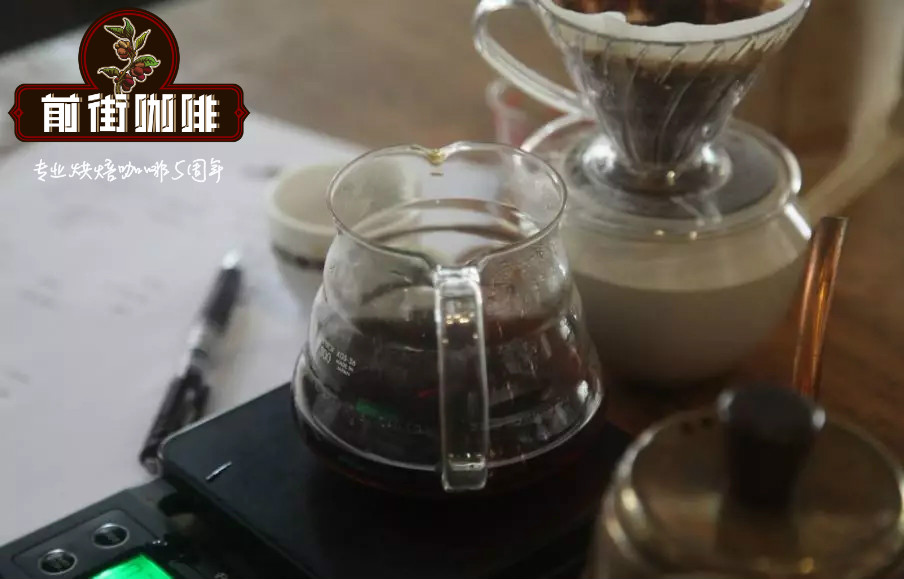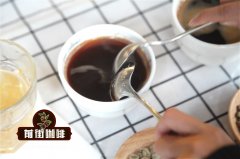How is Kenyan coffee graded? What is Kenyan AA TOP coffee?

Professional coffee knowledge exchange more coffee bean information please follow the coffee workshop (Wechat official account cafe_style)
Kenyan coffee is undoubtedly the most complex coffee in the world, and this complexity is multifaceted.
First of all, starting from the simplest, coffee from this beautiful East African country has a huge bean shape and a variety of flavors, such as colorful mosaics, showing the impact of different planting areas, varieties, and processing methods on coffee flavor.
Second, the way the Kenyan market operates: dominated by traditional auction systems, it is not easy to buy micro-batches of coffee on specific separate plots. During the peak season, exporters, traders and buyers test 150,200 or more cups of coffee every day in preparation for a live bid in Nairobi.
The coffee bureau will first send samples of these coffee beans to be auctioned to interested buyers for trial, and hold an auction every Tuesday at the Nairobi Coffee Exchange Coffee Exchange (Nairobi Coffee Exchange) in Nairobi, the capital of Kenya. Through a transparent auction mechanism and a dual-system parallel approach of official sales agents and independent sales agents, foreign buyers can also directly negotiate with corresponding producers to buy coffee. There is no need to go through the official auction board, so producers' hard work can be rewarded more fairly and equitably, without being exploited by the brokers in the middle.
Of course, these are the coffees that end up on the market, not counting the so-called "second window / channel" or "relationship / other channel" coffee samples (negotiate directly with the local raw bean representative or or the estate). Note, however, that direct procurement does not necessarily mean simple procurement.
Kenyan coffee grading
Kenyan coffee is graded according to the size, shape and hardness of coffee beans, from high to low into AA or AA+, AB, PB, C, E, TT, T:
AA level: size between 17muri and 18 mesh
AB grade: between 15 Mel and 16 mesh, accounting for the majority of output, but also the most common grade of raw beans
Class C: size between 12Mui 14 mesh
PB: round raw beans, accounting for about 10% of all coffee beans
E grade (elephant bean): two beans in one large variant bean, also known as elephant ear bean Elephant ear, mostly in more than 18 mesh, also known as elephant bean, its quantity is very small.
TT grade: from AA and AB grade beans, the lighter raw beans blown by air flow filter indicate that the beans are soft and the hardness is not up to standard.
T level: below 12 items. T grade is from C grade beans, the lighter raw beans blown by air flow filter, the beans are soft, the hardness is not up to standard, and the particles are small, and there are many defective beans.
MH/ML grade: beans that have not been washed and have not been selected, because they have been harvested, fall beans, accounting for about 7% of all coffee beans, belong to the lowest grade beans, only for the Kenyan domestic market.
The above is Kenya's official grading system, in addition to Kenyan exporters or raw bean traders, for AA grade and AB grade of these two grades of coffee raw beans added a special classification (not officially recognized by the Kenyan country), the order is TOP, PLUS (+), FAQ.
TOP
This is graded on the basis of cup test results. at present, it is not the official grading standard of Kenya. exporters will add their own grades, so it is inevitable that commercial behavior factors will be considered, so it can only be used as a reference. everything still has to return to baking and making cup tests. that's the right thing to do.
PLUS (+)
For the same bean, due to human factors, the standards of Company An and Company B are different, so it will produce different results. after all, there is no unified grading standard for this grade, coffee flavor cup test results, there is no standard to grade, so this can only be used as a reference, everything still has to return to their own cup test.
FAQ
Fair to Average Quality will have some slight defective beans, but it does not affect the flavor.
Speaking of which, we often see things like "AA+" and "AA++". Is there anything special about that?
As we mentioned earlier, the grades of TOP, PLUS (+) and FAQ are agreed by Kenyan coffee, so even if it is the same bean, the standards of each company are different, so the results are not the same. It is precisely because it is graded and added by exporters, there will inevitably be commercial behavior factors, so it can only be used as a reference. It depends on the performance of beans after actual baking and cup testing.
END
Important Notice :
前街咖啡 FrontStreet Coffee has moved to new addredd:
FrontStreet Coffee Address: 315,Donghua East Road,GuangZhou
Tel:020 38364473
- Prev

Panamanian Rosa Coffee lasrocas how to drink the New Blue Standard Rosa Coffee beans
Professional coffee knowledge exchange more coffee bean information Please pay attention to Coffee Workshop (Wechat official account cafe_style) once upon a time, Jamaica Blue Mountain Coffee could be said to be the most famous coffee in the coffee world, and its label was top, rare and super-expensive. There is no doubt that the most popular star in the coffee industry is Rosa Coffee. And in all the major universities
- Next

Why Kona coffee beans rank among the top 10 in the world? what is its unique attraction?
Professional coffee knowledge exchange more coffee bean information please follow the coffee workshop (Wechat official account cafe_style) Hawaii Kona coffee ($35 per 500g) this kind of coffee is grown in the Hawaiian islands, and different islands produce different taste of coffee, excellent climate and geographical location to create a comfortable taste of Kona coffee, is the world's 10 most expensive coffee
Related
- Detailed explanation of Jadeite planting Land in Panamanian Jadeite Manor introduction to the grading system of Jadeite competitive bidding, Red bid, Green bid and Rose Summer
- Story of Coffee planting in Brenka region of Costa Rica Stonehenge Manor anaerobic heavy honey treatment of flavor mouth
- What's on the barrel of Blue Mountain Coffee beans?
- Can American coffee also pull flowers? How to use hot American style to pull out a good-looking pattern?
- Can you make a cold extract with coffee beans? What is the right proportion for cold-extracted coffee formula?
- Indonesian PWN Gold Mandrine Coffee Origin Features Flavor How to Chong? Mandolin coffee is American.
- A brief introduction to the flavor characteristics of Brazilian yellow bourbon coffee beans
- What is the effect of different water quality on the flavor of cold-extracted coffee? What kind of water is best for brewing coffee?
- Why do you think of Rose Summer whenever you mention Panamanian coffee?
- Introduction to the characteristics of authentic blue mountain coffee bean producing areas? What is the CIB Coffee Authority in Jamaica?

